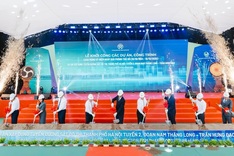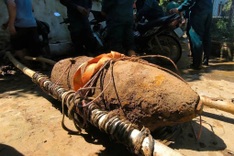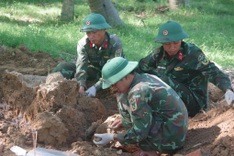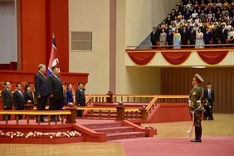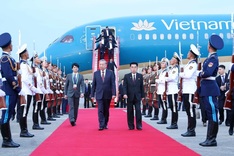The King Ham Nghi festival procession is a typical and unique cultural feature in the central area of Vietnam at the beginning of spring.
Ham Nghi was the Nguyen dynasty's 8th emperor, after the establishment of Vietnam as a French Protectorate in 1884. The brother of Emperor Kien Phuc, who died after a brief reign in 1884, Ham Nghi rose to the throne at the age of twelve. In July of 1845, he fled the capital of Hue with Regent Ton That Thuyet to launch the Can Vuong resistance movement against French occupation.
Every two years, on the seventh day of Tet, thousands of people at Huong Khe, Ha Tinh Province flock to Phu Gia Commune where the king proclaimed the Can Vuong (it means save the king) Edict to call on people to help the King fight the French.
His precious sword, royal robe, golden elephant, golden Nghe (a kind of legendary lion), black bronze tintinnabulum and royal proclamations are found intact there.
As a tradition, on the seventh day of Tet, these precious items of the King will be handed over to a new keeper who has to undergo a very strict selection process. In addition to the rite, there are many special games on the same day.
Below are some photos of the festival procession in Phu Gia:


Precious items from the King in Phu Gia

People flocking to Phu Gia

Even the elderly attend the festival
Tram Lam Temple which worships King Ham Nghi and is the starting point of the procession
Tran Van Nhung, the new keeper approaches Tram Lam Temple

Before the procession
Delegation attending the procession

Tran Van Nhung will keep the precious items of the King and hand them over to a new keeper next Festival
Special games during the Festival













